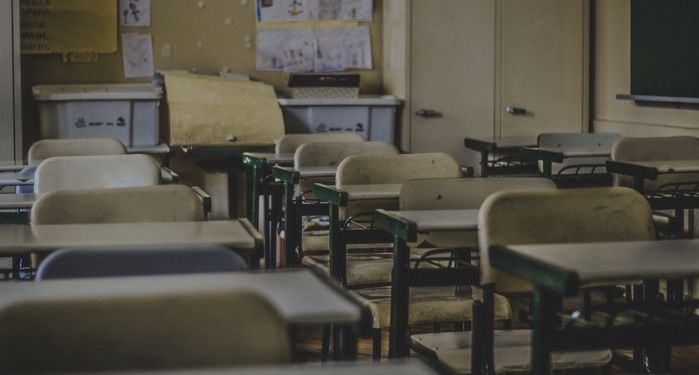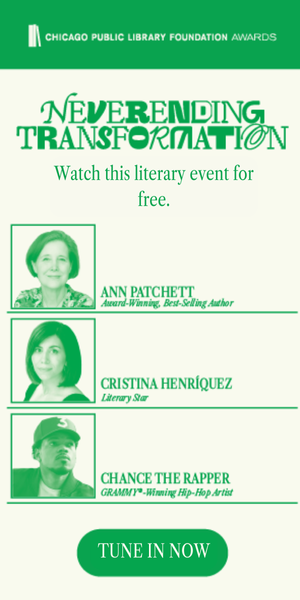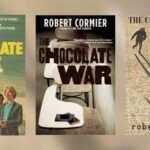
How Reading Diverse Books in Puerto Rico Inspired My Reading Habits
Cupeyville School is a small school in Puerto Rico where I graduated with about 54 students in 12th grade. Those students grew up with me and went to school with me since kindergarten, and many of us became super close and are still connected to this day. Not everyone was close to me, though.
Back then, when a student got bullied, it was very much in the classroom, since there was no social media at the time. For me, going to this prep school was magical and made me learn so much about myself. To escape the mean girls, I made friends with students from different grades and built a close group of best friends. I threw myself into writing for the school paper, scribbling poetry in a small notebook, and reading. Lots and lots of reading. While I did indulge in teen classics at the time, like Sweet Valley High and anything Fear Street–related, it was my required reading in my English and Spanish classes that made me realize a lot about Puerto Rico, myself, and our culture.
Nowadays, in the United States, there’s a disturbing trend happening. Books like Romina Garber’s Lobizona and Kalynn Bayron’s excellent Cinderella is Dead are being considered to be banned in different school libraries, general libraries, and other educational institutions in the United States in record numbers. To me, and many others, this is extremely troublesome, especially when a lot of these books showcase different cultures, backgrounds, realistic issues, and relatable LGBTQ characters. This, honestly, makes me nostalgic for growing up a young reader in Puerto Rico, being a part of the culture on the island, and of a culture in the classroom that encouraged self expression and reading books with realistic themes, no holds barred.
For example, there was one book that really changed my life when I read it then. It was Manuel Zenio Gandia’s La Charca, which explored themes that still capture reader’s attention to this day. La Charca was considered one of the first books to catapult and find a fanbase in and outside of Puerto Rico, as it explored what happened behind the scenes while rich people and countries indulged in Puerto Rican–harvested black coffee, or café. Behind the magical coffee beans hid a disturbing reality where harvesters resided in small broken down huts and dealt with starvation.
Exploring Puerto Rico’s small neighborhoods in the hill, and including unique Puerto Rican slang, the book was chock-full of real moments, such as the meaning of la charca itself, which meant a stagnant pond, which the author utilized to represent the colonial times where so many Puerto Ricans were oppressed and dealt with sadness, disease, and struggles. To me, La Charca and its themes still resonate with so many of us, even beyond the Puerto Rican culture, that deal with oppression and injustice in a world obsessed with satisfying the rich at all costs.
Books like these remind me of those being banned today, because of how much they give us pangs of realization of how the world is and open our eyes to realities that we might not otherwise be educated about. In my honest opinion, if we shield ourselves and ignore our history, where we come from and other’s plight, we cannot be sensitive and knowledgeable humans as a society. This is why book bans completely terrify me, especially as a modern educator who encourages diverse thinking and discussions, as well as deep analysis of current events and the global issues that surround us.
Another life-changing book that was covered in my high school curriculum was the 1935 classic Puerto Rican story La Llamarada by Enrique Laguerre. The author, whose full name was Enrique Arturo Laguerre Vélez, lived his life as a teacher, writer, playwright, critic, and a journalist with his own newspaper column at the time. He was from Moca, Puerto Rico, and was definitely ahead of his time as a writer who explored the intricacies and issues of the island. While the writing was dense, if you truly dig in, you’ll find a meaningful story following the sugar cane industry in Puerto Rico, an island that survived on its unique agriculture and harvesting industry. The novel also explored the struggle of Puerto Rican society during times of the Great Depression, and how the rural world was and its residents were affected. This historic novel has withstood the test of time, discussing struggles that many hard-working citizens dealt with at the time, and I am happy I got to read it and explore its themes in a high school classroom setting.
In the end, I am so thankful to have experienced, as a teen growing up in Puerto Rico, a time and place where freedom of expression reigned and we were able to discuss and read these type of books exploring historic realities in Puerto Rico that made us aware of where we came from and where we wanted to be in the future as citizens of the world. I feel like the current world has a lot to learn from my time as a high school student on the island, where we read books that would, yes, explore tough themes, but made us more educated and knowledgeable about our culture: where it was and where it was headed.
As an educator myself, I hold these brave teachers who assigned us this type of remarkable and unforgettable novels as inspiration up to this day, and I am a believer that students should have the chance to discuss all types of books, themes and historical issues that teach us a lot about our present as well. Without this type of intellectual freedom, I am truly afraid for the future. As a teacher myself, I will always try my best to educate, inspire, and give my students the right to read books: those they choose themselves, and those they learn from in my classroom and beyond.
What books do you remember reading as a teen? Are there assigned books that opened your eyes and you, to this day, have not forgotten? Let me know on Twitter @AuroraMiami.










